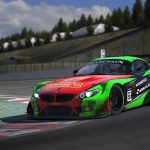Welcome to your ultimate resource for the best racing brake fluid. It will guide you on understanding and choosing the top-performing brake fluids for racing. In motorsport having the right brake fluid can make the difference between winning and losing.
Continue reading for our meticulously crafted guide which answers some of the most asked questions about racing brake fluid. We will also go through the intricacies of brake fluid technology, its critical role in racing performance, and how it affects your vehicle’s braking system.
At the end of this guide, we outline the 5 best racing brake fluids, which will remove the pain of research and decision making.
Lets start with the basics…
What Does Brake Fluid Do?
Brake fluid and racing brake fluid is very important. It is the brake fluid which helps activate your brakes and slow the car down. But as with any fluid, this needs checking regularly and changed occasionally.
For both everyday brake fluid and racing brake fluid, if the temperatures become too high, this will be felt by the driver through the brake pedal. Driving a car where the brake fluid has boiled due to excessive temperature can be a scary experience! If the fluid boils this turns the liquid brake fluid to a gas. Liquid is not compressible, but a gas is, hence if it does boil you get the heart stopping spongy long pedal feel, known as ‘fading’. The same happens if there is water in the brake fluid, the water turns to steam (gas) with the same results. Therefore, the wet boiling point is very important. This is discussed below. This is less likely to happen on the average commute but still important to be aware of.
Having the correct fluid in your braking system doesn’t just protect you from having a loss of braking performance, it also plays a vital role in providing the driver with a consistent pedal feel, important for confidence and consistency on track.
In motorsport, the car components work much harder than on the road, particularly in the braking system. Due to the higher speeds and multiple hard presses of the brakes, the temperature of all the brake components quickly rises to levels that easily surpass any that you would encounter on your daily commute.
These temperatures can easily spiral out of control if you don’t install parts and components that are capable of handling these higher temperatures – this doesn’t just apply to the brake system like pads and discs, but also your brake fluid, for this reason, specifically designed racing brake fluid is needed.
What Brake Fluid Do I Need?
As part of the manufacturing process, brake fluids are designed to meet certain standards that are set by relevant industry organisations. One of the most used standards is the DOT rating, which is set by the US Department of Transportation.
Ratings such as DOT 3, DOT 4, DOT 5, and DOT 5.1 are among the most widely used in the automotive industry. DOT5.1 is thought to be the highest spec. DOT 5.1 has strict viscosity standards at lower temperatures in addition to having a high boiling point. Therefore, in cold climate areas, the DOT 5.1 brake fluid is very commonly used on most modern cars. The most widely distributed brake fluid is the DOT 4. The boiling point temperatures of DOT4 is very similar to those of DOT5.1. The major difference is the viscosity at low temperatures. Today, cars are commonly equipped with ABS, and DOT5.1 fluid is used since the viscosity of it helps the ABS work consistently even in very cold climates.
For racing brake fluid, a high boiling point is far more important than low temperature viscosity. A car used in a cold motorsport environment still gets very hot brakes, think of rally cars competing in the Finnish WRC, or ice race cars. For these reasons most of the racing brake fluids are classed as DOT4 or exceed DOT4, some are not even rated as they are aimed purely at motorsport.
Brake fluids with a rating of DOT 3, 4 and 5.1 are all Glycol based fluids and, as such, can be used in the same braking system. Although they can be mixed this is never recommended for motorsport except in an emergency repair. If lower spec fluid is added this will reduce the boiling point of the system to near the boiling point of the lesser fluid.
DOT 5 brake fluid is silicone based and is not compatible with any of the other types of fluid. As such, it is best to switch and use this fluid only when you have had a complete braking system overhaul including new hoses, as any traces of other brake fluids will be detrimental to braking performance.
Brake Fluid Boiling Point
When looking to select a racing brake fluid and a brake fluid for the everyday commute, you will undoubtedly come across the terms “dry boiling point” and “wet boiling point”
A brake fluid that is Glycol based is what is known as a hygroscopic fluid, meaning that it will absorb moisture. Even though hydraulic brake systems are well sealed to prevent water getting in, moisture can be absorbed via the reservoir vent or cap.
In contrast, a silicone brake fluid will not absorb any water, resulting in a more consistent pedal feel and brake system performance, but water can still get in the brake system as above, just not attracted by the fluid.
The dry boiling point is the temperature at which the brake fluid will reach boiling point when it is new straight from the bottle. This is before the fluid has absorbed water. This is very useful for comparing fluids.
The wet boiling point is measured with fluid that has 3.7% water by volume. This boiling point has more real-world importance especially considering the UK climate! Also, very few competitors change fluid every time they compete.
If you are not sure about what the operating temperature of your braking system is, a brake pyrometer is invaluable. For those on a tight budget there are useful brake temperature indicator strips (change colour to show maximum temperature) This will help you to select the correct type of fluid.
The Best Racing Brake Fluid
There are many different types of brake fluid available on our website, each has their own specifications. We have picked out our best brake fluids that will ensure you have a consistent pedal feel and reduce the possibility of losing braking performance throughout the course of a race. So, let’s get into it.
Castrol React SRF
One of the most sought-after racing brake fluids is Castrol SRF racing brake fluid. This is the choice of many of the leading teams from all forms of top level competition including Formula 1, Endurance GT racing and Touring cars. Indeed, anywhere the extreme brake temperatures are encountered
Not only does this racing brake fluid have a very high dry boiling point, but it also has an extremely high wet boiling point, in fact the highest we list. This is thanks to the advanced materials that have been employed in a unique and patented Castrol formulation This means that it will provide the best performance from the first press of the brake pedal and importantly change very little in performance over time.
- Dry Boiling Point: 320°C
- Wet Boiling Point: 270°C
- DOT Rating: 3 and 4
For the most up to date price on Castrol’s SRF racing brake fluid, check out our website.
Motul RBF660
Being a high performance DOT 4 racing brake fluid. The RBF660 racing brake fluid is from renowned lubricant manufacturer Motul, this offers a very high dry boiling point, making it a superior racing brake fluid compared to many DOT 5 and DOT 5.1 counterparts that are available. This is suited to cars with all forms of braking system, including those with carbon and ceramic brakes.
- Dry Boiling Point: 325°C
- Wet Boiling Point: 204°C
- DOT Rating: 4
You can see the very latest pricing for the Motul RBF660 on the website.
AP Racing Radi-Cal R2
One of the major players in racing brake fluid systems, AP Racing offer a complete range of brake fluid variants that have been specifically designed for motorsport. With a high dry boiling point that is suitable for everything from standard discs to carbon and even ceramic discs. The AP Racing Radi-Cal R2 racing brake fluid is a popular choice for many teams and drivers.
- Dry Boiling Point: 312°C
- Wet Boiling Point: 204°C
- DOT Rating: 4
Click to view the price for the AP Racing Radi-Cal R2 fluid.
Millers Oils 320 Plus
As effective on the road as it is on the track, this Millers Oils 320 Plus racing brake fluid from Millers Oils is capable of withstanding the high demands of motorsport. Used in many modern high-performance brake and clutch systems, this brake fluid has a high level of resistance to vapour locking and offers a nice consistent brake pedal feel.
- Dry Boiling Point: Above 320°C
- Wet Boiling Point: Above 195°C
- DOT Rating: 4
If you want an up to date price for Millers Oils 320 Plus brake fluid, get on over to the Demon Tweeks website.
Brembo HTC 64T
This is a high temperature racing brake fluid, which is designed for the most extreme racing conditions. It has a dry boiling point of 335 degree centigrade, the highest we list. Developed exclusively for competition use, Brembo HTC 64T provides the highest performance under all racing conditions and has been used in F1, ALMS, DTM, WRC and BTCC. Not recommended for use in magnesium brake components.
- Dry Boiling Point: 335°C
- Wet Boiling Point: 204°C
- Exceeds DOT Rating: 4
Brembo’s latest price for the HTC 64T is on the Demon Tweeks site.
In Summary
So, there you have it, a background on the uses of brake fluid and its importance for racing, along with a list of the 5 best racing brake fluids. Be sure to check out the racing brake fluid range that is available on the Demon Tweeks website for more options. If you still have questions on which brake fluid or racing brake fluid is right for you, get in touch!
Enjoyed this? Read more of our latest news:
- How to Choose Racing / Rally / Track Day Tyres
- Engine & Gear Oil Explained: Their Purpose & Grading
- Racewear FIA Standards Guide
Where To Next?
Looking for the latest motorsport parts and accessories? Check out our wide range from top brands.
Come and visit us at our store, showroom and fitting centre in Wrexham.
Want to know more about our story? Learn about who we are and why we’ve been driven by passion for over 50 years.
Interested in everything we do? Catch up on all the latest Demon Tweeks news.




